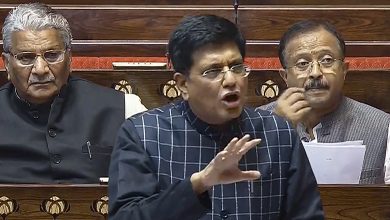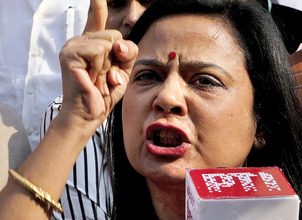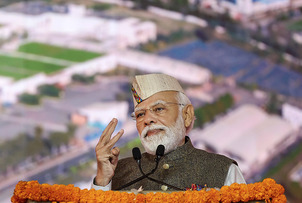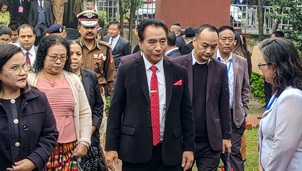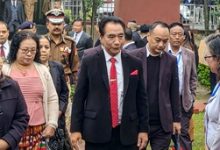PM launches Rs 100 lakh cr National Master Plan

New Delhi, Oct 13 (PTI): Prime Minister Narendra Modi on Wednesday launched a Rs 100 lakh crore national master plan for multi-modal connectivity that aims to develop infrastructure to reduce logistic costs and boost the economy.
PM Gati Shakti targets to cut logistic costs, increase cargo handling capacity and reduce the turnaround time, Modi said at a function to launch the plan.
The plan aims to lend more power and speed to projects by connecting all concerned departments on one platform, he said, adding the infrastructure schemes of various ministries and state governments will be designed and executed with a common vision.
Modi said taxpayers’ money in the past was ‘insulted’ through a lethargic approach to development work, with departments working in silos and there was no coordination on projects. Development, he said, is not possible without quality infrastructure and the government has now resolved to develop it in a holistic manner.
Gati Shakti joins different departments for the coordinated development of projects from road to railways, aviation to agriculture, the Prime Minister said. Stating that high logistics cost in India at 13 per cent of GDP was impacting competitiveness in exports, he said PM Gati Shakti is aimed at reducing logistic cost and turnaround time. This, he said, will give a boost to India as an investment destination.
The Prime Minister said the speed and scale that India is witnessing under his government was never seen in the previous 70 years of independence.
Giving examples, he said the first inter-state natural gas pipeline was commissioned in 1987. From then to 2014, 15,000-km of the natural gas pipeline was built. Currently, more than 16,000-km of the new gas pipeline is being constructed.
“What was done in 27 years, we are doing in it in less than half that time,” he said. In five years prior to the BJP government coming to power in 2014, 1,900-km of the rail line was doubled, while in the last 7 years 9,000-km of rail line doubling has happened. Similarly, against 3,000 km of railway line electrification in five years prior to 2014, 24,000 km rail line doubling has happened in the last 7 years.
From 250-km of metro in 2015, the metro rail network has expanded to 700-km and work is on another 1,000-km, he said, adding 1.5 lakh village panchayats have been connected with optic fibre network in last 7 years as compared to only 60 village panchayats in five years prior to 2014.
Vessel turnaround time at ports has been reduced from 41 to 27 hours and attempts are being made to reduce it further, he said, adding 4.25 lakh circuit km of power transmission line have been laid against 3 lakh circuit km in five years prior to 2014.
Renewable energy has expanded the times, he said.
PM GatiShakti plan involves the creation of a common umbrella platform through which infrastructure projects can be planned and implemented in an efficacious manner by way of coordination between various ministries/departments on a real-time basis.
With more visibility and availability of information and data on a real-time basis, there will be efficient implementation of infrastructure projects, less information asymmetry between ministries, reduction in working in silos as well as fewer delays due to lack of coordination between various government agencies.
The Prime Minister said that over the years, the signage ‘work in progress’ became the symbol of lack of trust.
Progress requires speed, eagerness and collective efforts and today’s 21st century India is leaving behind old systems and practices, Modi said.
“We have not only developed a work culture of completing the projects within the stipulated time frame but efforts are now being made to complete the projects ahead of time,” he added.
The Prime Minister stated that the subject of infrastructure in the country has not been a priority for most political parties and this is not even visible in their manifesto.
Now, the situation has come that some political parties have started criticising the construction of necessary infrastructure for the country, he said.
Although it is globally accepted that the creation of quality infrastructure for sustainable development is a proven way, which gives rise to many economic activities and creates employment on a large scale, the Prime Minister pointed out.
He expressed satisfaction that now the focus is on avoiding delays due to lack of coordination.
Modi said now the collective power of the government is being channelled into fulfilling the schemes.
“PM Gati Shakti Master Plan not only brings together the government process and its various stakeholders but also helps to integrate different modes of transportation. This is an extension of holistic governance,” he said.
To increase the income of the farmers and fishermen of the country, the infrastructure related to processing is also being expanded rapidly.
The Prime Minister expressed hope that with the development of quality infrastructure, India can realise the dream of becoming the business capital.
Just as JAM (Jan Dhan, Aadhaar, Mobile) trinity revolutionised the access of government facilities to the people, PM Gati Shakti will do the same for the field of Infrastructure, he added.
“It’s a 21st century India and the government systems are moving forward…Today’s mantra is – work for progress, wealth for progress, plan for progress and preference for progress.
“We have not only developed a culture to complete the projects within the specified time frame but are also trying to complete them before time,” Modi said.
Private players too were not aware that where roads, canals and power plants were coming up and solutions for all these problems will come from PM Gati Shakti national master plan, the Prime Minister said.
“When we move, based on a master plan, there will be an optimum use of resources,” he said, adding world over people have accepted the importance of quality infrastructure for sustainable development.
He also urged states to join the initiative.
—-


